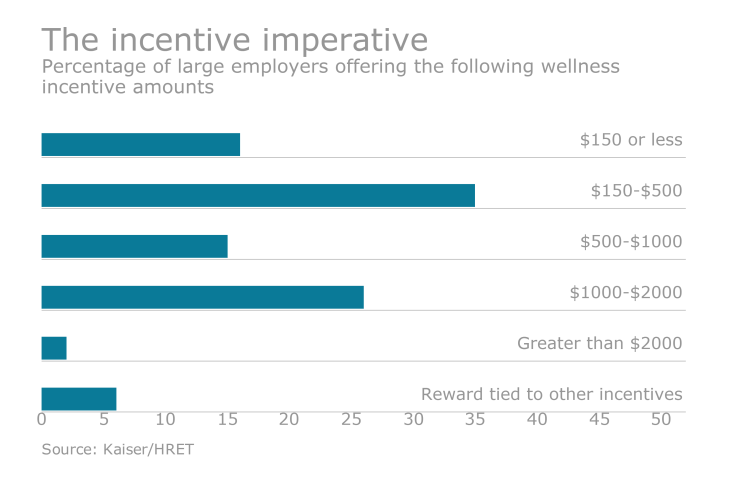The key to changing healthcare habits — and in turn reducing healthcare costs and saving employers millions of dollars — just may be offering consumers money to shop around for procedures, if new analysis is any indication.
Healthcare data firm Vitals, which operates SmartShopper — a program offered by some employers to provide cash to workers who choose quality healthcare options with lower prices — released a report this week detailing significant healthcare cost savings tied to offering incentives.

The report shows that across SmartShopper’s eight health plans and employer clients, consumers collectively earned $1.46 million and generated nearly $12 million in gross dollar savings in 2015. Put another way, employers saved $7 for every $1 they paid to consumers in incentives.
The program represents a different way employers are handling ever-rising healthcare costs rather than cost-shifting, raising deductibles or reducing benefits. With SmartShopper, people are rewarded with cash for switching to high-quality, lower-cost facilities. The program can share savings with consumers because of “extreme price variations that exist from one facility to the next,” even in the same market. In 2015, the average savings per procedure shopped was $625, Vitals says.
For diagnostic scans, like MRIs and CTs, shopping among members was up over 50% from the previous year, Vitals says, while shopping for blood work was up over 46%. In turn, these routine procedures generated large total savings — over $2.2 million and $1.1 million, respectively.
“The member is the one who does all the work,” explains Rob Graybill, vice president of SmartShopper. “They engage, find out about cost and quality and vote with their feet to generate savings. SmartShopper shares a portion of those savings back to the member in incentive rewards.”
The bottom line, as indicated by the firm’s findings, is incentives work, he says.
“Incentives have been proven to work in all other aspects of our lives as consumers, and we are applying that logic to healthcare,” he says.
“Incentives are here to stay and will continue to evolve into expanded services.”
Incentives are simply a win-win for both employers and consumers, he continues.
“Both the member and the employer win in terms of savings. This alignment between the member and employer is one of the key reasons that incentives work. The member is doing their part to control costs and is rewarded.”
The added bonus is that such incentives push consumers to have a stake in the game and be proactive by making it a habit to shop around for healthcare deals.
“Americans shop for everything. Healthcare should be no different,” Graybill says. “Members and employers are paying thousands more than they need for healthcare. Only by introducing basic economic principles into healthcare, allowing members to shop like an expert based on cost and quality, can we help to control and lower healthcare costs.”
And don’t expect incentives to be a flash in the pan. Employers are beginning to realize that incentives are key to driving results, Graybill says, which is a sign that cash incentives have long-term viability.
“Employers have invested in transparency tools and are not seeing the savings they were promised,” he says. “In this case, ‘if you build it, they will come’ simply hasn’t proven to be the case, based on the results. Employers now realize that just having a tool isn’t enough to get members to care. Incentives drive an 11 times increase in usage of the tool and a 61% repeat shopping rate over a four-year period, based on our internal analysis. Incentives are here to stay and will continue to evolve into expanded services as members become true consumers. We are just at the start of that journey.”





